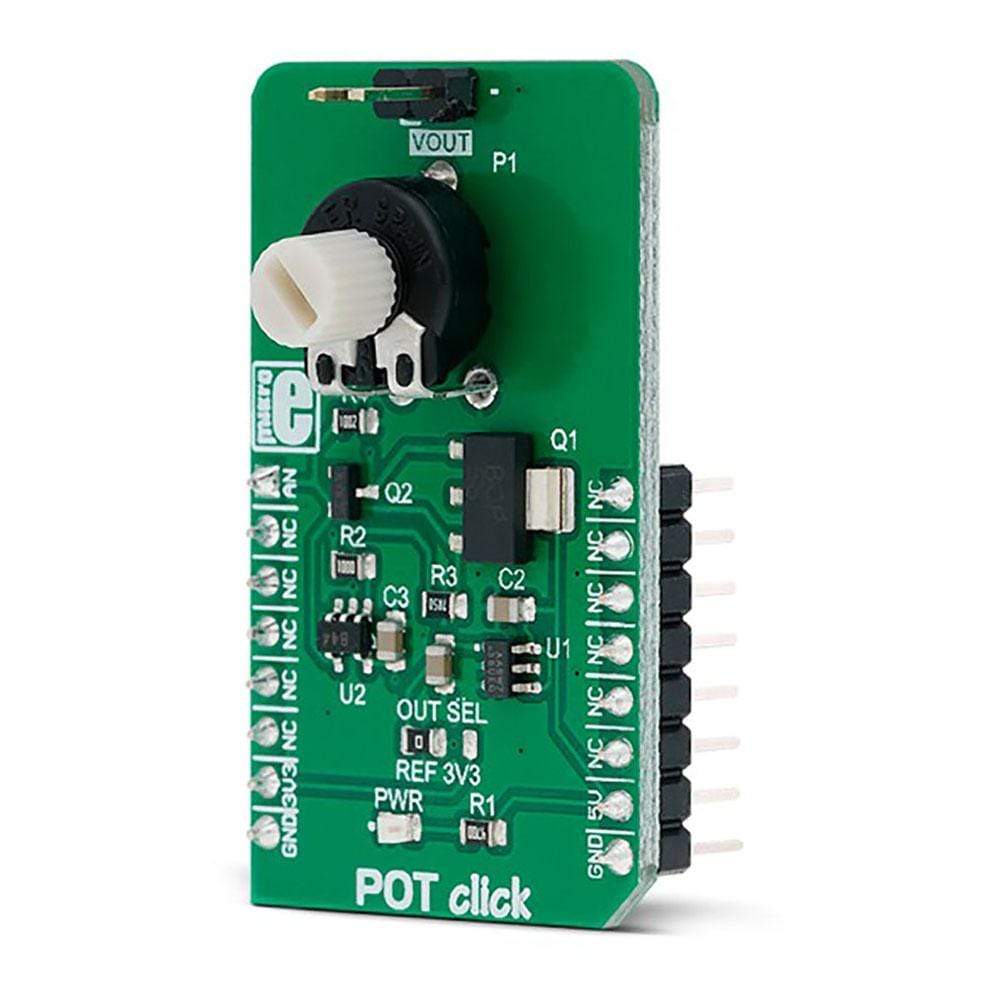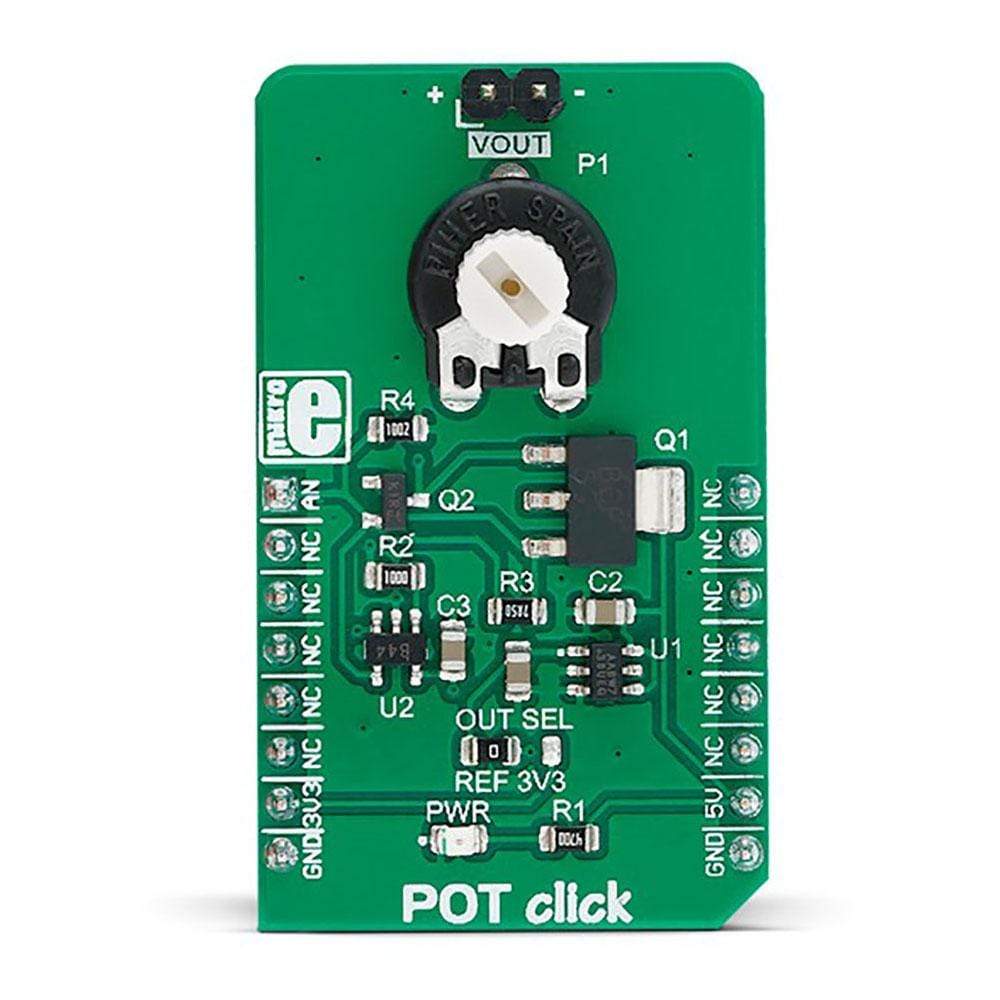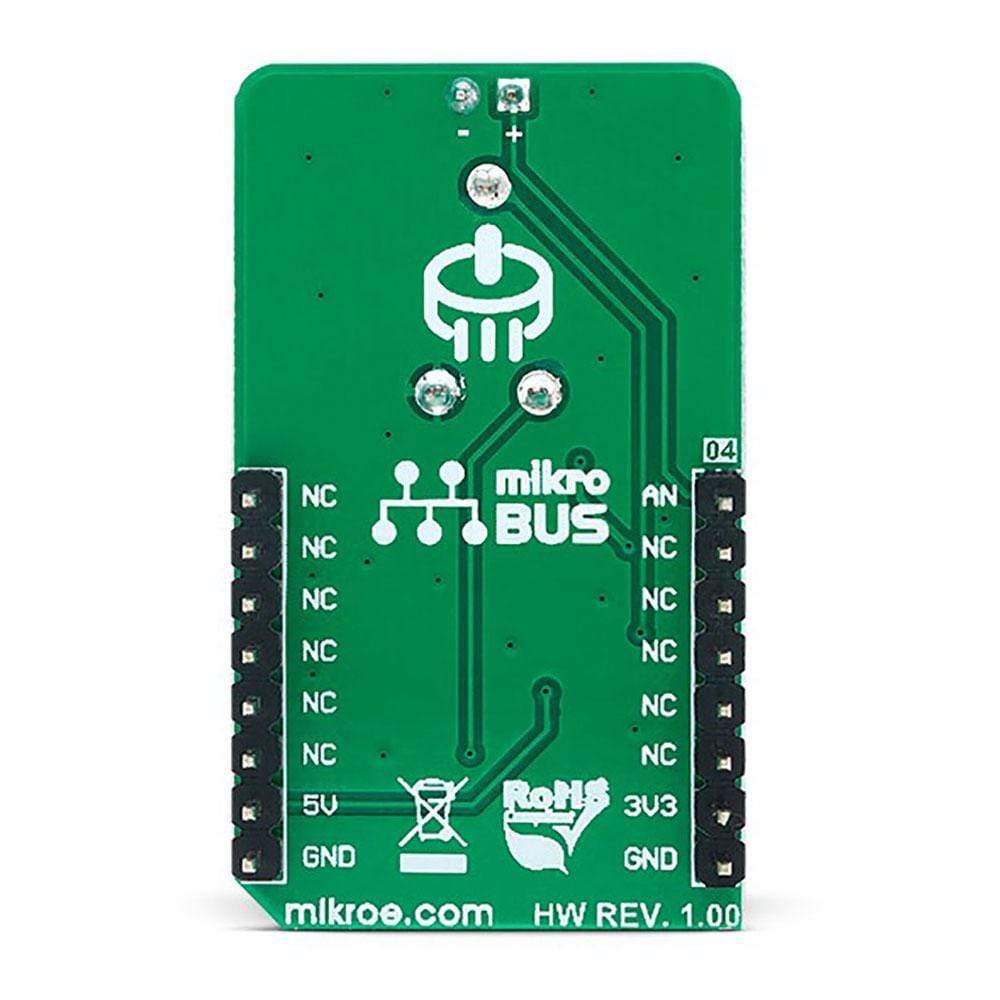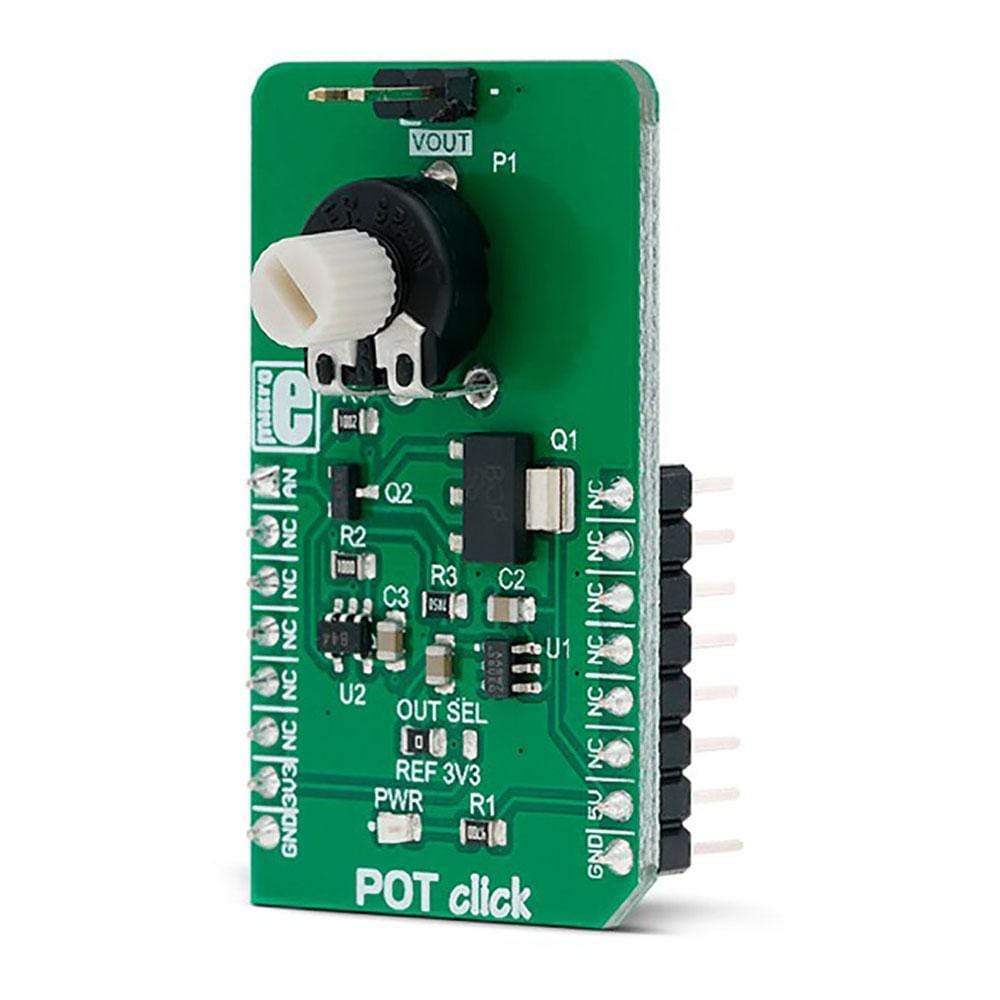
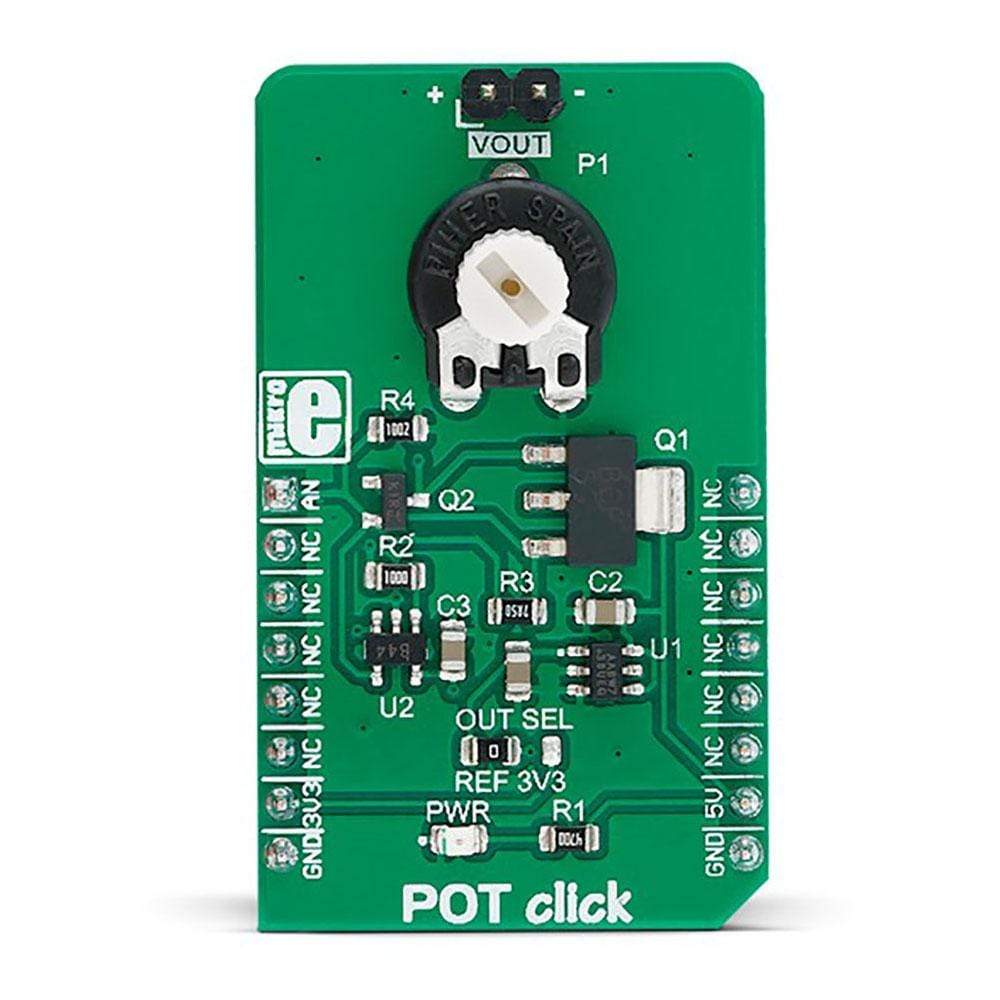
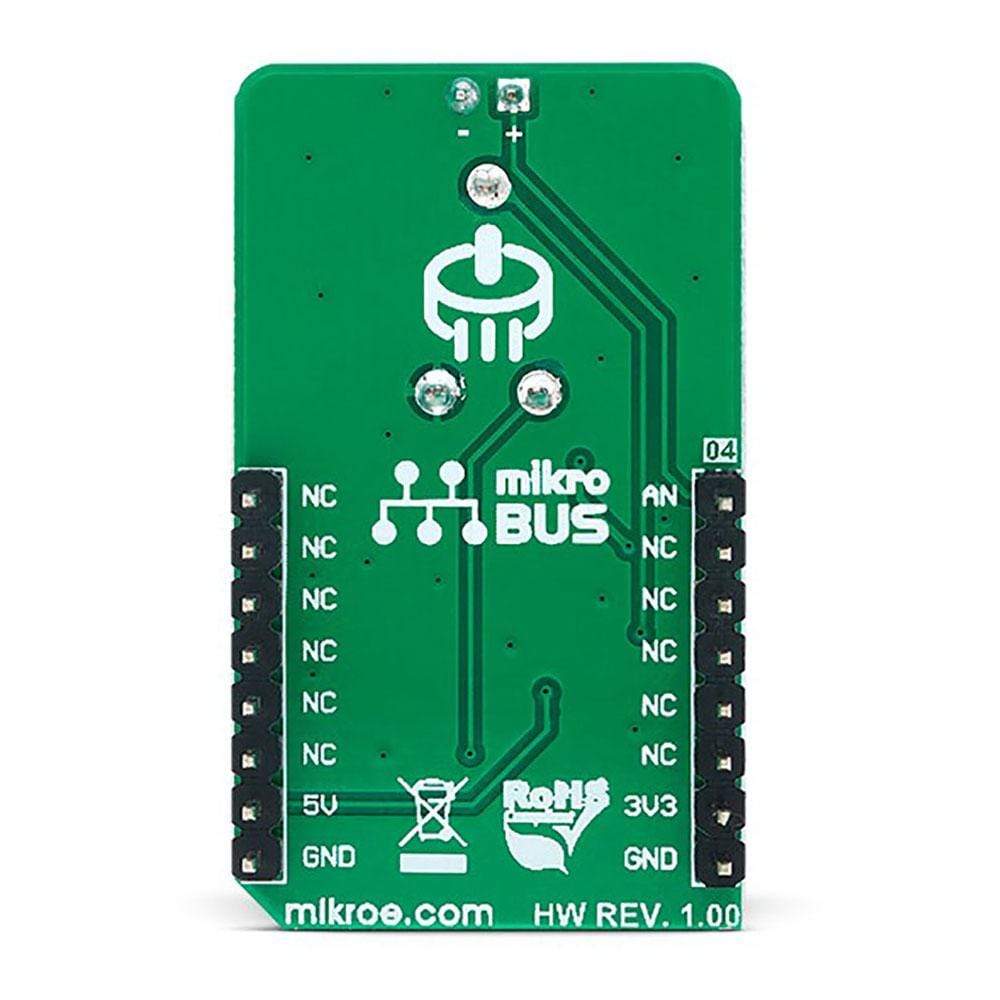
Overview
The POT Click Board™ is based on a potentiometer with the accurate selectable reference voltage output. By employing a high-quality 10mm carbon potentiometer, this Click Board™ can provide very accurate voltage output. The POT Click Board™ is also equipped with the SMD jumper, which allows the maximum reference voltage to be selected between two typically used values: 2.048V or 3.3V.
The output is buffered with a rail-to-rail buffering operational amplifier, which provides constant input and output impedance. The output current is limited by the protection circuit at the output, preventing damage if the output is shorted to GND.
Downloads
Le POT Click Board™ est basé sur un potentiomètre avec une sortie de tension de référence sélectionnable précise. En utilisant un potentiomètre en carbone de 10 mm de haute qualité, ce Click Board™ peut fournir une sortie de tension très précise. Le POT Click Board™ est également équipé du cavalier SMD, qui permet de sélectionner la tension de référence maximale entre deux valeurs généralement utilisées : 2,048 V ou 3,3 V.
La sortie est tamponnée par un amplificateur opérationnel de tampon rail à rail, qui fournit une impédance d'entrée et de sortie constante. Le courant de sortie est limité par le circuit de protection en sortie, ce qui évite tout dommage si la sortie est court-circuitée à la masse.
| General Information | |
|---|---|
Part Number (SKU) |
MIKROE-3402
|
Manufacturer |
|
| Physical and Mechanical | |
Weight |
0.019 kg
|
| Other | |
Country of Origin |
|
HS Code Customs Tariff code
|
|
EAN |
8606018714735
|
Warranty |
|
Frequently Asked Questions
Have a Question?
Be the first to ask a question about this.

